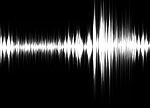Milosh
IsraTrance Junior Member

Started Topics :
27
Posts :
204
Posted : Dec 18, 2005 17:23
|
Threshold
Threshold is perhaps the most critical control of
any compressor. It sets the level at which a compressor
starts to work. Below the threshold point,
the volume of a signal is unchanged; above it, the
volume is reduced. For example, if Threshold is set
to 0 dB, input signals at or above 0 dB will be
compressed, while those below 0 dB will be
unaffected.
The incoming signal may be detected one of two
ways - either by viewing signal peaks or by RMS
("Root Mean Square," a formula for detecting average
signal level, much like our ears do). A compressor
may offer input detection by either means,
or, like the TC Electronic Finalizer, Triple•C,
M5000 and System 6000, it may allow a choice
between the two. Generally, peak detection works
best for applications where you are using a limiter
to prevent signal overloads, while RMS detection
works best when you are using a compressor to
raise overall apparent level.
Ratio
The amount of increase in input signal (in decibels,
or dB for short) required to cause a 1 dB increase
in output is called the Compression Ratio. A ratio
of 1:1 means that for every 1 dB of increase in
input level, there is a 1 dB increase in output level;
in other words, there is no compression being
applied. But a ratio of 8:1 means that an 8 dB
increase in input is required to produce only a 1 dB
increase in output.
A compressor's Threshold and Ratio controls work
in tandem. At a lower threshold setting, lower level
signals are compressed. However, when the ratio
is set lower - for example, 2:1 - the compressor has
less effect on the signal. Ratios of 10:1 and greater
are generally considered to be limiting as opposed
to compressing. At high ratios of 20:1 or higher
(some limiters even offer a theoretical infinite ratio
of ∞:1), "brick wall" limiting kicks in - that is, any
change in input, no matter how great, results in
virtually no increase in output level.
Soft Knee vs. Hard Knee
A compressor's "Knee" is related to its Threshold
control. The knee determines whether the compressor
will reach the maximum selected amount of
gain reduction quickly or slowly. A gradual transition
("Soft Knee") from no response to full gain reduction
will provide a gentler, smoother sound, while a
more rapid transition ("Hard Knee") will give an
abrupt "slam" to the signal. Therefore, a soft knee
is generally preferred for most program material,
although the hard knee's attack can be useful in
peak limiting and special situations such as
de-essing.
The knee of most compressors is preset to either
hard or soft, but some manufacturers offer the
ability to choose between the two.
Attack
The key to the operation of any compressor is the
setting of the Attack and Release times; these are
the parameters which most affect how "tight" or
how "open" the sound will be after compression.
Once a signal has crossed the threshold, the
attack time is the amount of time it takes for the
gain of a signal to decrease by the amount specified
by the ratio control.
A fast attack kicks in immediately and catches transients,
reducing their level and thus "softening" the
sound. A slow attack time allows transient signals
to pass the threshold unscathed before compression
begins.
Beware: If an attack time is too short, desirable
initial transients may be lost, softening the sound in
an unintended way, perhaps even clipping consonants
on a singer's voice.
Release
The Release time is the time it takes for the signal
to return to its initial (pre-gain reduction) level after
it drops below the threshold point.
If the release time is set too short for the program
material, with too much gain being restored each
time the signal falls below the threshold, "pumping"
and "breathing" artifacts occur, due to the rapid
rise of background noise as the gain is increased.
If the release time is set too long, however, a loud
section of the program may cause gain reduction
that persists through a soft section, making the soft
section inaudible.
Output (Makeup Gain)
Last in line is the Output Control, also known as
"makeup gain" because it is used to make up for
the gain reduction accomplished by the compressor.
To make it easier to compare the result of the
processing, the output control should be set to unity
gain, so that the processed signal is raised to the
point at which it matches the level of the unprocessed
input signal (for example, if a signal is being
reduced in level by approximately -6 dB, the output
makeup gain should be set to +6 dB).
        Never let computers to win a game! :) Never let computers to win a game! :)
-------------------------------------------- |

|
|